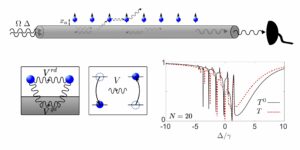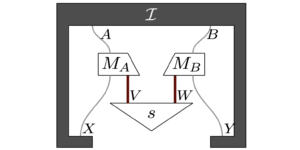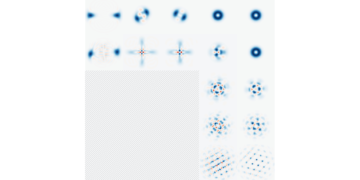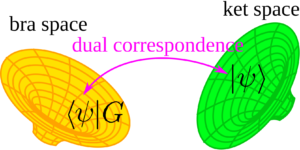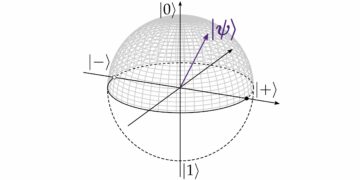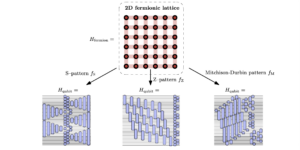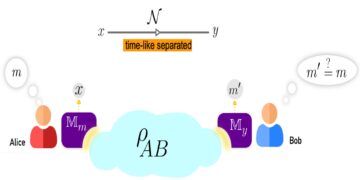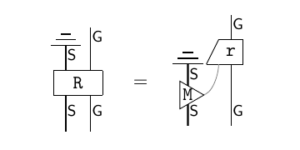
1Hearne Institute for Theoretical Physics, Department of Physics and Astronomy, and Center for Computation and Technology, Louisiana State University, Baton Rouge, Louisiana 70803, USA
2Institute for Quantum Computing and Department of Physics and Astronomy, University of Waterloo, Waterloo, Ontario N2L 3G1, Canada
3Department of Mathematics, University of New Orleans, Louisiana 70148, USA
4Wyant College of Optical Sciences, University of Arizona, Tucson, Arizona 85721, USA
5School of Applied and Engineering Physics, Cornell University, Ithaca, New York 14850, USA
6School of Electrical and Computer Engineering, Cornell University, Ithaca, New York 14850, USA
Find this paper interesting or want to discuss? Scite or leave a comment on SciRate.
Abstract
In this work, we introduce multipartite intrinsic non-locality as a method for quantifying resources in the multipartite scenario of device-independent (DI) conference key agreement. We prove that multipartite intrinsic non-locality is additive, convex, and monotone under a class of free operations called local operations and common randomness. As one of our technical contributions, we establish a chain rule for two variants of multipartite mutual information, which we then use to prove that multipartite intrinsic non-locality is additive. This chain rule may be of independent interest in other contexts. All of these properties of multipartite intrinsic non-locality are helpful in establishing the main result of our paper: multipartite intrinsic non-locality is an upper bound on secret key rate in the general multipartite scenario of DI conference key agreement. We discuss various examples of DI conference key protocols and compare our upper bounds for these protocols with known lower bounds. Finally, we calculate upper bounds on recent experimental realizations of DI quantum key distribution.
► BibTeX data
► References
[1] Charles H. Bennett and Gilles Brassard. “Quantum cryptography: Public-key distribution and coin tossing”. In Proceedings of IEEE International Conference on Computers Systems and Signal Processing, Bangalore, India. Page 175–179. (1984). arXiv:2003.06557.
https://doi.org/10.1016/j.tcs.2014.05.025
arXiv:2003.06557
[2] Artur K. Ekert. “Quantum cryptography based on Bell’s theorem”. Physical Review Letters 67, 661–663 (1991).
https://doi.org/10.1103/PhysRevLett.67.661
[3] Dominic Mayers. “Unconditional security in quantum cryptography”. Journal of the ACM 48, 351–406 (2001). arXiv:quant-ph/9802025.
https://doi.org/10.1145/382780.382781
arXiv:quant-ph/9802025
[4] Marco Tomamichel and Renato Renner. “Uncertainty relation for smooth entropies”. Physical Review Letters 106, 110506 (2011). arXiv:1009.2015.
https://doi.org/10.1103/PhysRevLett.106.110506
arXiv:1009.2015
[5] Cyril Branciard, Eric G. Cavalcanti, Stephen P. Walborn, Valerio Scarani, and Howard M. Wiseman. “One-sided device-independent quantum key distribution: Security, feasibility, and the connection with steering”. Physical Review A 85, 010301 (2012). arXiv:1109.1435.
https://doi.org/10.1103/PhysRevA.85.010301
arXiv:1109.1435
[6] Dominic Mayers and Andrew. Yao. “Quantum cryptography with imperfect apparatus”. In Proceedings 39th Annual Symposium on Foundations of Computer Science (Cat. No.98CB36280). Pages 503–509. (1998). arXiv:quant-ph/9809039.
https://doi.org/10.1109/SFCS.1998.743501
arXiv:quant-ph/9809039
[7] Antonio Acín, Nicolas Brunner, Nicolas Gisin, Serge Massar, Stefano Pironio, and Valerio Scarani. “Device-independent security of quantum cryptography against collective attacks”. Physical Review Letters 98, 230501 (2007). arXiv:quant-ph/0702152.
https://doi.org/10.1103/PhysRevLett.98.230501
arXiv:quant-ph/0702152
[8] Rotem Arnon-Friedman, Frédéric Dupuis, Omar Fawzi, Renato Renner, and Thomas Vidick. “Practical device-independent quantum cryptography via entropy accumulation”. Nature Communications 9, 1–11 (2018).
https://doi.org/10.1038/s41467-017-02307-4
[9] Umesh Vazirani and Thomas Vidick. “Fully device-independent quantum key distribution”. Physical Review Letters 113, 140501 (2014). arXiv:1210.1810.
https://doi.org/10.1103/PhysRevLett.113.140501
arXiv:1210.1810
[10] Masahiro Takeoka, Saikat Guha, and Mark M. Wilde. “Fundamental rate-loss tradeoff for optical quantum key distribution”. Nature Communications 5, 1–7 (2014). arXiv:1504.06390.
https://doi.org/10.1038/ncomms6235
arXiv:1504.06390
[11] Eneet Kaur, Mark M. Wilde, and Andreas Winter. “Fundamental limits on key rates in device-independent quantum key distribution”. New Journal of Physics 22, 023039 (2020). arXiv:1810.05627.
https://doi.org/10.1088/1367-2630/ab6eaa
arXiv:1810.05627
[12] Marek Winczewski, Tamoghna Das, and Karol Horodecki. “Limitations on device independent key secure against non signaling adversary via the squashed non-locality” (2019). arXiv:1903.12154.
arXiv:1903.12154
[13] Ueli M. Maurer and Stephan Wolf. “Unconditionally secure key agreement and the intrinsic conditional information”. IEEE Transactions on Information Theory 45, 499–514 (1999).
https://doi.org/10.1109/18.748999
[14] Matthias Christandl and Andreas Winter. ““Squashed entanglement”: an additive entanglement measure”. Journal of Mathematical Physics 45, 829–840 (2004). arXiv:quant-ph/0308088.
https://doi.org/10.1063/1.1643788
arXiv:quant-ph/0308088
[15] Eneet Kaur, Xiaoting Wang, and Mark M. Wilde. “Conditional mutual information and quantum steering”. Physical Review A 96, 022332 (2017). arXiv:1612.03875.
https://doi.org/10.1103/PhysRevA.96.022332
arXiv:1612.03875
[16] Jérémy Ribeiro, Gláucia Murta, and Stephanie Wehner. “Fully device-independent conference key agreement”. Physical Review A 97, 022307 (2018). arXiv:1708.00798.
https://doi.org/10.1103/PhysRevA.97.022307
arXiv:1708.00798
[17] Gláucia Murta, Federico Grasselli, Hermann Kampermann, and Dagmar Bruß. “Quantum conference key agreement: A review”. Advanced Quantum Technologies 3, 2000025 (2020). arXiv:2003.10186.
https://doi.org/10.1002/qute.202000025
arXiv:2003.10186
[18] Michael Epping, Hermann Kampermann, and Dagmar Bruß. “Large-scale quantum networks based on graphs”. New Journal of Physics 18, 053036 (2016). arXiv:1504.06599.
https://doi.org/10.1088/1367-2630/18/5/053036
arXiv:1504.06599
[19] Satosi Watanabe. “Information theoretical analysis of multivariate correlation”. IBM Journal of Research and Development 4, 66–82 (1960).
https://doi.org/10.1147/rd.41.0066
[20] Dong Yang, Karol Horodecki, Michal Horodecki, Pawel Horodecki, Jonathan Oppenheim, and Wei Song. “Squashed entanglement for multipartite states and entanglement measures based on the mixed convex roof”. IEEE Transactions on Information Theory 55, 3375–3387 (2009). arXiv:0704.2236.
https://doi.org/10.1109/TIT.2009.2021373
arXiv:0704.2236
[21] David Avis, Patrick Hayden, and Ivan Savov. “Distributed compression and multiparty squashed entanglement”. Journal of Physics A: Mathematical and Theoretical 41, 115301 (2008). arXiv:0707.2792.
https://doi.org/10.1088/1751-8113/41/11/115301
arXiv:0707.2792
[22] Kaushik P. Seshadreesan, Masahiro Takeoka, and Mark M. Wilde. “Bounds on entanglement distillation and secret key agreement for quantum broadcast channels”. IEEE Transactions on Information Theory 62, 2849–2866 (2016). arXiv:1503.08139.
https://doi.org/10.1109/TIT.2016.2544803
arXiv:1503.08139
[23] Rotem Arnon-Friedman and Felix Leditzky. “Upper bounds on device-independent quantum key distribution rates and a revised Peres conjecture”. IEEE Transactions on Information Theory 67, 6606–6618 (2021). arXiv:2005.12325.
https://doi.org/10.1109/TIT.2021.3086505
arXiv:2005.12325
[24] Wei Zhang, Tim van Leent, Kai Redeker, Robert Garthoff, René Schwonnek, Florian Fertig, Sebastian Eppelt, Wenjamin Rosenfeld, Valerio Scarani, Charles C.-W. Lim, and Harald Weinfurter. “A device-independent quantum key distribution system for distant users”. Nature 607, 687–691 (2022). quant-ph:2110.00575.
https://doi.org/10.1038/s41586-022-04891-y
arXiv:2110.00575
[25] René Schwonnek, Koon Tong Goh, Ignatius W Primaatmaja, Ernest Y-Z Tan, Ramona Wolf, Valerio Scarani, and Charles C-W Lim. “Device-independent quantum key distribution with random key basis”. Nature Communications 12, 1–8 (2021).
https://doi.org/10.1038/s41467-021-23147-3
[26] Wen-Zhao Liu, Yu-Zhe Zhang, Yi-Zheng Zhen, Ming-Han Li, Yang Liu, Jingyun Fan, Feihu Xu, Qiang Zhang, and Jian-Wei Pan. “Toward a photonic demonstration of device-independent quantum key distribution”. Physical Review Letters 129, 050502 (2022). arXiv:2110.01480.
https://doi.org/10.1103/physrevlett.129.050502
arXiv:2110.01480
[27] David Beckman, Daniel Gottesman, Michael A Nielsen, and John Preskill. “Causal and localizable quantum operations”. Physical Review A 64, 052309 (2001). arXiv:quant-ph/0102043.
https://doi.org/10.1103/physreva.64.052309
arXiv:quant-ph/0102043
[28] Nicolas Brunner, Daniel Cavalcanti, Stefano Pironio, Valerio Scarani, and Stephanie Wehner. “Bell nonlocality”. Reviews of Modern Physics 86, 419 (2014). arXiv:1303.2849.
https://doi.org/10.1103/revmodphys.86.419
arXiv:1303.2849
[29] Ke Li and Andreas Winter. “Squashed entanglement, $mathbf{k}$-extendibility, quantum Markov chains, and recovery maps”. Foundations of Physics 48, 910–924 (2018). arXiv:1410.4184.
https://doi.org/10.1007/s10701-018-0143-6
arXiv:1410.4184
[30] Maksim E. Shirokov. “Uniform continuity bounds for characteristics of multipartite quantum systems”. Journal of Mathematical Physics 62, 092206 (2021). arXiv:2007.00417.
https://doi.org/10.1063/5.0055155
arXiv:2007.00417
[31] Te Sun Han. “Linear dependence structure of the entropy space”. Information and Control 29, 337–368 (1975).
https://doi.org/10.1016/s0019-9958(75)80004-0
[32] Te Sun Han. “Nonnegative entropy measures of multivariate symmetric correlations”. Information and Control 36, 133–156 (1978).
https://doi.org/10.1016/s0019-9958(78)90275-9
[33] Dong Yang, Michał Horodecki, and Z. D. Wang. “An additive and operational entanglement measure: Conditional entanglement of mutual information”. Physical Review Letters 101, 140501 (2008). arXiv:0804.3683.
https://doi.org/10.1103/PhysRevLett.101.140501
arXiv:0804.3683
[34] Stefano Pironio, Antonio Acín, Nicolas Brunner, Nicolas Gisin, Serge Massar, and Valerio Scarani. “Device-independent quantum key distribution secure against collective attacks”. New Journal of Physics 11, 045021 (2009). arXiv:0903.4460.
https://doi.org/10.1088/1367-2630/11/4/045021
arXiv:0903.4460
[35] Timo Holz, Hermann Kampermann, and Dagmar Bruß. “A genuine multipartite Bell inequality for device-independent conference key agreement”. Physical Review Research 2, 023251 (2020). arXiv:1910.11360.
https://doi.org/10.1103/PhysRevResearch.2.023251
arXiv:1910.11360
[36] Liang Huang, Xue-Mei Gu, Yang-Fan Jiang, Dian Wu, Bing Bai, Ming-Cheng Chen, Qi-Chao Sun, Jun Zhang, Sixia Yu, Qiang Zhang, et al. “Experimental demonstration of genuine tripartite nonlocality under strict locality conditions”. Physical Review Letters 129, 060401 (2022). arXiv:2203.00889.
https://doi.org/10.1103/physrevlett.129.060401
arXiv:2203.00889
[37] D. P. Nadlinger, P. Drmota, B. C. Nichol, G. Araneda, D. Main, R. Srinivas, D. M. Lucas, C. J. Ballance, K. Ivanov, E. Y.-Z. Tan, P. Sekatski, R. L. Urbanke, R. Renner, N. Sangouard, and J.-D. Bancal. “Experimental quantum key distribution certified by Bell’s theorem”. Nature 607, 682–686 (2022). arXiv:2109.14600.
https://doi.org/10.1038/s41586-022-04941-5
arXiv:2109.14600
[38] Junior R. Gonzales-Ureta, Ana Predojević, and Adán Cabello. “Device-independent quantum key distribution based on Bell inequalities with more than two inputs and two outputs”. Physical Review A 103, 052436 (2021). arXiv:2104.00413.
https://doi.org/10.1103/PhysRevA.103.052436
arXiv:2104.00413
[39] Jean-Daniel Bancal, Jonathan Barrett, Nicolas Gisin, and Stefano Pironio. “Definitions of multipartite nonlocality”. Physical Review A 88, 014102 (2013). arXiv:1112.2626.
https://doi.org/10.1103/physreva.88.014102
arXiv:1112.2626
[40] Eneet Kaur, Karol Horodecki, and Siddhartha Das. “Upper bounds on device-independent quantum key distribution rates in static and dynamic scenarios”. Physical Review Applied 18, 054033 (2021). quant-ph:2107.06411.
https://doi.org/10.1103/physrevapplied.18.054033
arXiv:2107.06411
[41] Tony Metger, Yfke Dulek, Andrea Coladangelo, and Rotem Arnon-Friedman. “Device-independent quantum key distribution from computational assumptions”. New Journal of Physics 23, 123021 (2021).
https://doi.org/10.1088/1367-2630/ac304b
[42] Tony Metger and Thomas Vidick. “Self-testing of a single quantum device under computational assumptions”. Quantum 5, 544 (2021). arXiv:2001.09161.
https://doi.org/10.22331/q-2021-09-16-544
arXiv:2001.09161
[43] Aby Philip, Eneet Kaur, Peter Bierhorst, and Mark M. Wilde. “Intrinsic non-locality and device-independent conference key agreement” (2021) arXiv:2111.02596v1.
arXiv:2111.02596v1
[44] Karol Horodecki, Marek Winczewski, and Siddhartha Das. “Fundamental limitations on device-independent quantum conference key agreement” (2021) arXiv:2111.02467v1.
https://doi.org/10.1103/PhysRevA.105.022604
arXiv:2111.02467v1
[45] Karol Horodecki, Marek Winczewski, and Siddhartha Das. “Fundamental limitations on the device-independent quantum conference key agreement”. Physical Review A 105, 022604 (2022). arXiv:2111.02467.
https://doi.org/10.1103/PhysRevA.105.022604
arXiv:2111.02467
[46] Itamar Pitowsky. “The range of quantum probability”. Journal of Mathematical Physics 27, 1556–1565 (1986).
https://doi.org/10.1063/1.527066
[47] Manuel Forster, Severin Winkler, and Stefan Wolf. “Distilling nonlocality”. Physical Review Letters 102, 120401 (2009). arXiv:0809.3173.
https://doi.org/10.1103/PhysRevLett.102.120401
arXiv:0809.3173
[48] Manuel Forster and Stefan Wolf. “Bipartite units of nonlocality”. Physical Review A 84, 042112 (2011). arXiv:0808.0651.
https://doi.org/10.1103/PhysRevA.84.042112
arXiv:0808.0651
[49] Rodrigo Gallego and Leandro Aolita. “Nonlocality free wirings and the distinguishability between Bell boxes”. Physical Review A 95, 032118 (2017). arXiv:1611.06932.
https://doi.org/10.1103/PhysRevA.95.032118
arXiv:1611.06932
Cited by
[1] Karol Horodecki, Marek Winczewski, and Siddhartha Das, “Fundamental limitations on the device-independent quantum conference key agreement”, Physical Review A 105 2, 022604 (2022).
The above citations are from SAO/NASA ADS (last updated successfully 2023-01-21 00:01:07). The list may be incomplete as not all publishers provide suitable and complete citation data.
On Crossref’s cited-by service no data on citing works was found (last attempt 2023-01-21 00:01:04).
This Paper is published in Quantum under the Creative Commons Attribution 4.0 International (CC BY 4.0) license. Copyright remains with the original copyright holders such as the authors or their institutions.
- SEO Powered Content & PR Distribution. Get Amplified Today.
- Platoblockchain. Web3 Metaverse Intelligence. Knowledge Amplified. Access Here.
- Source: https://quantum-journal.org/papers/q-2023-01-19-898/
- 1
- 10
- 11
- 1984
- 1998
- 1999
- 2001
- 2011
- 2012
- 2014
- 2016
- 2017
- 2018
- 2019
- 2020
- 2021
- 2022
- 28
- 39
- 67
- 7
- 84
- 9
- 98
- a
- above
- ABSTRACT
- access
- accumulation
- ACM
- advanced
- affiliations
- against
- Agreement
- All
- Ana
- analysis
- and
- annual
- applied
- arizona
- astronomy
- Attacks
- author
- authors
- based
- basis
- Bell
- between
- Bing
- Bound
- boxes
- Break
- broadcast
- called
- CAT
- Center
- Certified
- chain
- chains
- channels
- characteristics
- Charles
- chen
- class
- Coin
- Collective
- College
- comment
- Common
- Commons
- Communications
- compare
- complete
- computation
- computer
- Computer Engineering
- computer science
- computers
- computing
- conditions
- Conference
- conjecture
- connection
- contexts
- contributions
- control
- Convex
- copyright
- Correlation
- cryptography
- Daniel
- data
- David
- Department
- dependence
- Development
- device
- discuss
- distribution
- dynamic
- Engineering
- establish
- establishing
- examples
- fan
- Federico
- Finally
- found
- Foundations
- Free
- from
- fundamental
- General
- Gilles
- graphs
- harvard
- helpful
- holders
- HTTPS
- IBM
- IEEE
- in
- In other
- independent
- india
- inequalities
- information
- Institute
- institutions
- interest
- interesting
- International
- intrinsic
- introduce
- Jan
- JavaScript
- Jian-Wei Pan
- John
- journal
- Key
- known
- Last
- Leave
- Li
- License
- limitations
- limits
- List
- local
- Louisiana
- Main
- Maps
- Marco
- mark
- mathematical
- mathematics
- measure
- measures
- method
- Michael
- mixed
- Modern
- Month
- more
- mutual
- Nature
- networks
- New
- New Orleans
- New York
- Nicolas
- ONE
- Ontario
- open
- operational
- Operations
- original
- Other
- Paper
- Peter
- physical
- Physics
- plato
- Plato Data Intelligence
- PlatoData
- Proceedings
- processing
- properties
- protocols
- Prove
- provide
- published
- publisher
- publishers
- Quantum
- quantum computing
- quantum cryptography
- quantum networks
- quantum systems
- random
- randomness
- range
- Rate
- Rates
- recent
- recovery
- references
- relation
- remains
- research
- research and development
- Resources
- result
- review
- Reviews
- ROBERT
- roof
- Rule
- scenarios
- Science
- SCIENCES
- Secret
- secure
- security
- Signal
- single
- Space
- State
- States
- STEPHANIE
- Stephen
- Strict
- structure
- Successfully
- such
- suitable
- Sun
- Symposium
- system
- Systems
- Technical
- Technologies
- Technology
- The
- their
- theoretical
- Tim
- Timo
- Title
- to
- Tony
- Transactions
- under
- units
- university
- updated
- URL
- use
- users
- various
- via
- volume
- W
- which
- Winter
- Wolf
- Work
- works
- wu
- year
- zephyrnet



